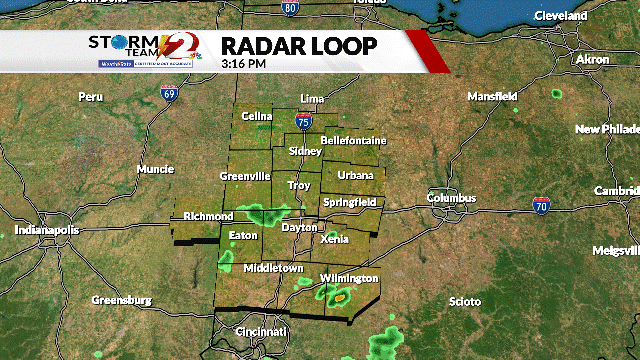EL PASO, Texas (Border Report) — On a typical day, more than 70,000 commercial trucks and a quarter of a million private vehicles make their way across the U.S.-Mexico border.
That represents $7.3 billion in legitimate trade. But with only a fraction of those vehicles subjected to exhaustive inspection, it also opens a path for the Mexican drug cartels to flood American streets with methamphetamines.
“Commercial cargo — trucks and other conveyances — coming to the port of entry is the perfect opportunity for the drug cartels to conceal and bring meth into the United States,” said Kyle W. Williamson, special agent in charge of the El Paso Divison of the Drug Enforcement Administration.
El Paso is one of eight major methamphetamine distribution hubs in the United States where the Justice Department is conducting Operation Crystal Shield. The DEA-led initiative is meant to disrupt the flow of a new, more powerful version of a synthetic drug that’s quickly rising in popularity, bringing additional health risks to American communities and causing Mexico to sink deeper into violence.

Meth seizures in the past year are up 42% in El Paso and, in Juarez, Mexico, just across the Rio Grande, drug addiction is soaring and murders are up to 1,500 a year.
“If you look at El Paso on a map, it’s strategically placed. You can access the entire U.S. interstate system from here,” Williamson said. “That’s why El Paso is strategic and why Juarez is an important gateway for the cartels to control; it allows them to touch every part of the United States.”
Meth seizures are also up in Phoenix (78%), Los Angeles (67%), Houston (47%), Atlanta (24%) and Dallas (a whopping 430%), among others. Its resurgence has to do as much with Americans looking for a new high as with the cartels finding ways to mass-produce a more potent drug with chemicals imported from China. Wholesale meth prices have fallen in the U.S. from about $4,000 a pound to $2,500 a pound, and the DEA says it’s due to an overabundance of the drug
“Since 2015, we’ve seen a 1,000 percent increase in meth being mixed with fentanyl,” Williamson said. “Fentanyl is a very dangerous drug. An amount equal to a grain of salt can kill you. The cartels are manufacturing meth and fentanyl on an industrial scale. But it’s not an exact science. Many times the mixtures aren’t accurate. You could have a lethal dose of meth mixed with fentanyl. That makes it especially dangerous to a person who may be experimenting with meth for the first time.”

War limited by international border
One of the stated goals of Crystal Shield is to disrupt the operations of the Mexican drug cartels that are manufacturing and shipping meth to the United States.
That’s easier said than done when the enemy is across an international border in a country that since 1846 has tried to protect its sovereignty from a giant of a neighbor to the north.
So even though law-enforcement in West Texas knows the face of the enemy — the Sinaloa cartel, La Linea, the Cartel Jalisco Nueva Generacion, Gente Nueva, Los Mexicles, Barrio Azteca, La Empresa and others — they have to rely on the cooperation of Mexican authorities. However, they say that in recent years such cooperation has been productive at both the Mexican federal and Chihuahua state levels.

The Lopez Obrador administration just last week extradited the son of the Jalisco cartel’s boss, the latest in a long series of high-profile extraditions of criminals wanted by the United States. And local officials speak well of the cooperation they’re receiving from Chihuahua and Juarez authorities.
However, Mexican officials have their hands full these days with the cartels and meth.
“You do see some trends in Juarez that we haven’t seen in the past,” Williamson said, referring to a steep rise in murders not seen south of the border since the drug wars of a decade ago.
But this time it’s not the major drug trafficking organizations going after each other for the drug routes to the United States. Now it’s their underlings fighting for street corners to sell smaller amounts of drugs in Juarez itself. There, crystal meth is the people’s drug of choice and the street gangs’ cash-cow.
“The retail drug market in Juarez is operating at present like it never has been before. You have these gangs that are trying to control a drug trade and a drug market in Juarez. Before, it was just a transit point: drugs passed through. Now we’re seeing higher rates of addiction, we’re seeing higher rates of retail sales,” Williamson said.
And most concerning of all is that these mere street gangs are now trading bullet for bullet with the police. Last week, seven drug traffickers died in gun battles where six police officers were also wounded.
Fighting addictions in the U.S.
Williamson is on his 30th year with the DEA and his career has taken him across continents. In 2015 he was promoted to the agency’s Senior Executive Service and spent two years as regional director in the Middle East. When his stint in Afghanistan ended, he was asked to take over the DEA’s office in El Paso, where he had been the Assistant Special Agent in Charge in 2014.
Williamson said drug use and demand in the United States needs to be addressed as well.
His advice to parents is to talk to their kids about drugs and the dangers that come with them.
“I’ve heard parents whose child died from an overdose say, ‘Everything was fine, I was okay as long as they were just using marijuana,'” he said. “But we do consider marijuana a gateway drug. Most people who are addicted to cocaine, heroin and meth started consuming marijuana.”




















































